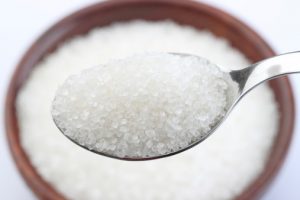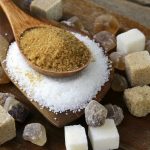
But there is another culprit that is often overlooked in discussions regarding the liver, even though it is a large contributor to nonalcoholic fatty liver disease (NAFLD).
Nonalcoholic fatty liver disease is when fat accumulates in the liver, and it’s beginning to surpass alcoholic liver disease as a leading cause of liver failure.
As our waistlines continue to grow, the fat in our livers also increases; the item to blame for this crisis is none other than sugar.
Sugar and the liver

Over time this fatty buildup can lead to fibrosis, which can eventually turn into cirrhosis – scarring of the liver. Cirrhosis is the response to liver damage, and at this stage the damage is irreversible. Additional, a fatty liver increases your risk of type-2 diabetes, so it’s important to keep your liver as healthy as possible.
If you thought you were in the clear because you don’t drink, just know that an unhealthy diet can harm your liver just the same.
Sugar and your body

- Increased risk of type-2 diabetes
- Weight gain
- Increased risk of heart disease and stroke
- Tensed blood vessels
- Worsened bad cholesterol
- Addiction to sugar
- Drained energy
- Depression
- Damages to your skin
With all these negative effects brought on by sugar, limiting the amount you consume is essential for overall good health.
How to prevent nonalcoholic fatty liver disease
If you’re concerned about your liver health, it’s not too late to make it healthy again. Studies have shown that losing weight can begin to restore the liver and undo the fat accumulated in it. Here are some other ways to prevent nonalcoholic fatty liver disease.
- Eat a healthy diet.
- Reduce your sugar intake.
- Maintain a healthy weight.
- Exercise regularly.
Simple lifestyle changes are all it takes to keep your liver and entire body healthy. Although your liver can regenerate itself, if damage continues to occur it can lead to severe cirrhosis which is irreversible. Take the necessary precautions to prevent liver damage from affecting you.